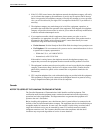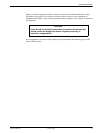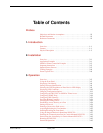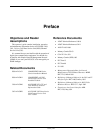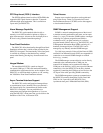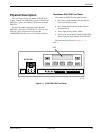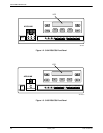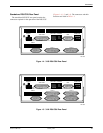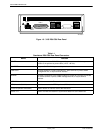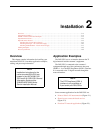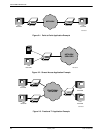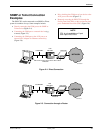
ACCULINK 316x DSU/CSU
1-2 January 1997 3160-A2-GB21-50
DTE Drop/Insert (DSX-1) Interface
The DTE Drop/Insert interface allows DTEs/PBXs that
support the DS1 signal format to share the T1 network
with other high-speed equipment. This is available on
2-port and 4-port DSU/CSUs.
Alarm Message Capability
The DSU/CSU can be attached, either locally or
remotely, to an ASCII terminal or printer to display or
print alarm messages. Alarms can also be displayed on a
PC that is using a terminal emulation package.
Front Panel Emulation
The DSU/CSU offers functionality through Front Panel
Emulation software that is similar to that provided by the
DSU/CSU front panel. The functionality of the front panel
is available by clicking on the function keys with the
mouse rather than by pressing keys from the actual front
panel.
Integral Modem
The standalone DSU/CSUs contain an integral
low-speed (2400 bps), V.22bis dial modem that enables
communication with remote devices such as another 316x
DSU/CSU, an ASCII terminal or printer, or a PC running
the 3100 Series Front Panel Emulation software.
Async Terminal Interface Support
The DSU/CSU can be configured and managed from
an asynchronous (async) terminal. The async terminal’s
full screen display uses a menu hierarchy similar to the
DSU/CSU’s front panel. You can perform device
management and configuration operations as if you are
using the DSU/CSU’s front panel, but you do not have the
limitation of the 2-line, 16-character LCD.
Telnet Access
Remote async terminal operations can be performed
using Telnet access. Telnet is a Transmission Control
Protocol/Internet Protocol (TCP/IP) service that supports
a virtual terminal interface.
SNMP Management Support
SNMP is a network management protocol that is used
to monitor network performance and status, and to report
alarms (i.e., traps). To function, SNMP requires a manager
consisting of a software program housed within a
workstation or PC; an agent consisting of a software
program housed within a device (e.g., the DSU/CSU); and
a Management Information Base (MIB) consisting of a
database of managed objects. The DSU/CSU can be
managed by any industry-standard SNMP manager.
Two link layer protocols, Point-to-Point Protocol (PPP)
and Serial Line Internet Protocol (SLIP), are supported for
connection to an external SNMP manager or network
device (e.g., a router).
The SNMP manager or network device can be directly
connected to the communications (COM) port. An
external LAN Adapter can be connected to either the
COM port or the auxiliary (AUX) port to provide Ethernet
connectivity. Also, the DSU/CSU can be daisy chained
together by connecting the COM port of one device to the
AUX port of the other, providing SNMP connectivity.
The SNMP management system can communicate to
the DSU/CSU remotely through the Facility Data Link
(FDL) or (for 2-port and 4-port DSU/CSUs) the
synchronous data port’s Embedded Data Link (EDL).



